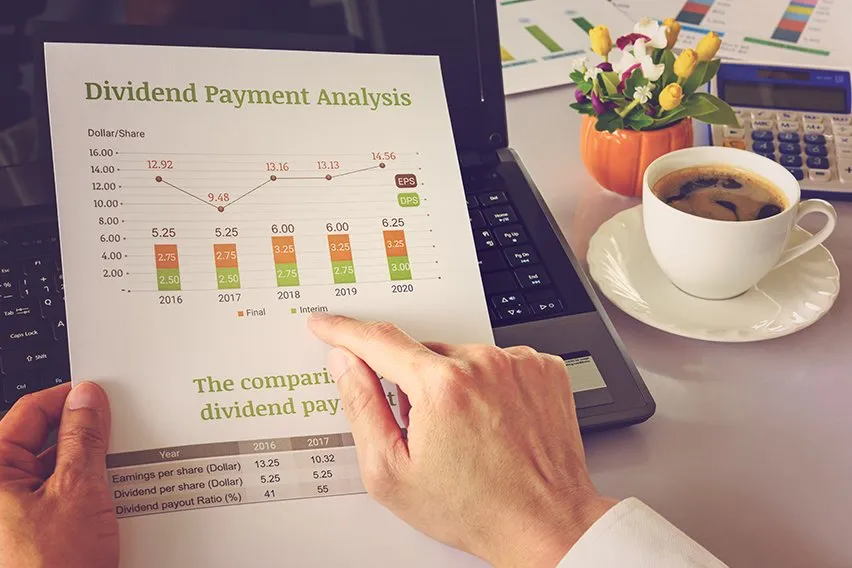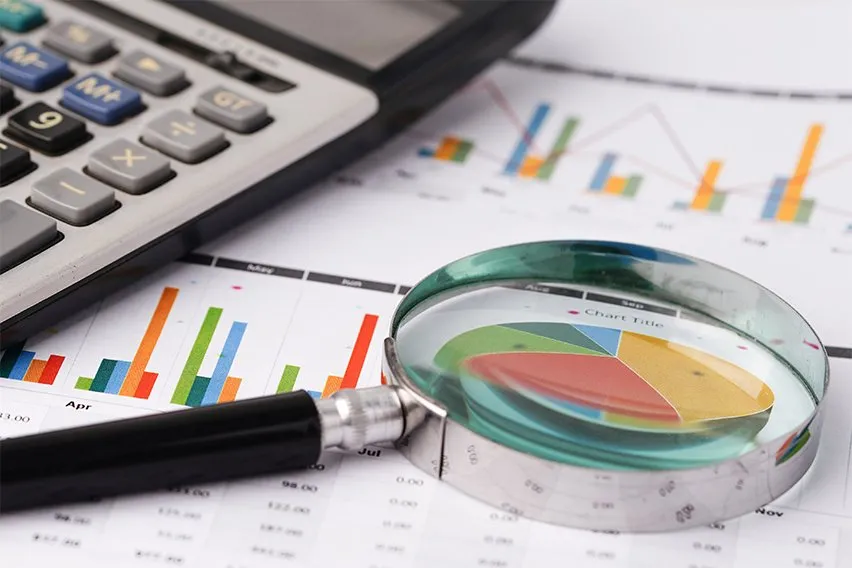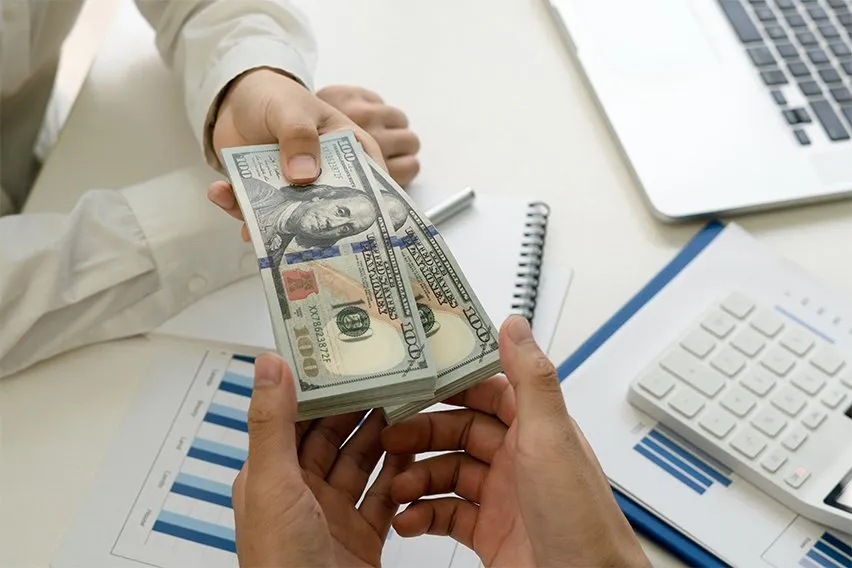Dividend Payout Ratio: Definition, Formula & Calculation

Have you ever wondered what the dividend payout ratio is? Do you know how to calculate it with the right formula? Are you curious about what a good dividend payout ratio is for your company? If so, then this guide will help.
The dividend payout ratio shows how much of a company’s earnings are paid out as dividends to shareholders. It’s calculated by dividing total dividends per share (DPS) by EPS. This guide will tell you everything you need to know about dividend payout ratios. Keep reading to learn more.
Here’s What We’ll Cover:
What Is a Dividend Payout Ratio?
What Is a Good Dividend Yield?
Which Companies Have the Best Dividend Payout Yields?
The Current Dividend Payout Ratio
Why Dividend Yield Is Important
Do You Need to Consult a Professional?
What Is a Dividend Payout Ratio?
The dividend payout ratio is the percentage of net income paid out as dividends to shareholders during the period.
The dividend payout ratio is one metric that can be used to determine how much a company pays out to its shareholders in relation to the overall earnings it generates. For example, if a company has an EPS (earnings per share) of $1.00 and pays out dividends of $0.80, its dividend payout ratio would be 80%.
Most companies pay out a portion of their earnings as dividends to shareholders each year. This can help reduce the capital available for growth. It makes the company more shareholder friendly than one that does not pay dividends at all. It also serves as an incentive for shareholders to continue holding the stock since they rely on dividend payments to earn money.

What Is a Good Dividend Yield?
The dividend yield may seem like it’s related to the dividend payout ratio, but it is actually different. It shows how much income investors will receive by owning the stock and receiving dividends. It’s based on a percentage of the stock’s market price.
The dividend yield is calculated by dividing the annual dividend per share (DPS) by the current stock price. For example, if you bought a stock for $50 and it had an annual dividend of $2, your dividend yield would be 4%.
The average dividend yield is about 2% to 4%, but it varies between industries. Utilities companies typically have high dividend yields, while technology companies typically have dividend yields of less than 1%. Typically, sectors focused on growth have lower dividend yields. Industries focused less on growth have higher yields.
Which Companies Have the Best Dividend Payout Yields?
Some of the largest companies with the highest dividend yields include:
- AT&T
- Verizon (NYSE: VZ)
- General Electric (NYSE: GE)
- Wells Fargo (NYSE: WFC)
- Procter & Gamble (NYSE: PG).
The Current Dividend Payout Ratio
Companies should generally aim for a dividend payout ratio that is sustainable over time, which means it does not compromise growth. The current yield shows how much money you would make if the company’s stock price stays at its current level. Consequently, companies with high profit margins tend to have low payout ratios and vice versa.
Why Dividend Yield Is Important
A company’s dividend yield can provide valuable insight to investors. It can help an investor decide whether or not they want to invest in a certain stock and how well the company is doing. For example, when looking for new investments, it’s important to know which companies pay dividends. It can also be important when deciding whether or not to sell your current investments.
When a company has a very low dividend yield, this usually indicates that the company is focused on growth. You see this often in tech stocks. They need their capital for expansion, so the dividend yield tends to stay low.
Conversely, when a company has a higher dividend yield, it likely means that the company is more mature. You often see this in blue chip stocks. These companies have a strong and stable foundation, so they can afford to pay higher dividends. They also generally see little EPS expansion, so the dividend payout ratio tends to stay high.
Lastly, be on the lookout for extremely high dividend yields. These can seem very enticing. If you see a high dividend yield accompanied by a falling stock price, this may indicate that investors are losing confidence in the company’s ability to achieve strong growth going forward. This can be an indication that you should sell your shares, since its stock price is likely to decline. Failing companies can offer high dividend yields to entice new investors into the market.
Can You Live Off Dividends?
Dividends serve as an additional source of income for shareholders. For most investors, dividends will not cover your monthly expenses. They may help you supplement your monthly income and save money. While they can help you build wealth, they do not work for everybody. In order to have a significant dividend distribution, you will need a large investment in the market.
If dividends are the only source of income you have, it is best to manage them carefully. You should invest conservatively and look at how your current dividend income will impact your spending habits. If you do not save enough money elsewhere, withdrawing money from your investment account may help you meet your expenses. Do this with caution. Dwindling your nest egg can have serious repercussions in the future.
One of the best things about receiving dividend income is receiving it for as long as you own the stock, which is known as a “retained” dividend. You can reinvest your retained dividends to help build wealth faster. You can receive cumulative returns on those dividends.

How Can You Make $500 a Month in Dividends?
In order to make $500 per month in dividends, you would need an investment similar to the following. Let’s assume a conservative yield of 3%. $500 per month would be $6,000 per year. We can calculate the investment needed by using the following formula:
$6,000 / .03 = $200,000
In order to achieve $6,000 per year in dividend payments, you would need $200,000 invested. This assumes a 3% dividend yield for a $500/month distribution.
You can adjust those accordingly based on smaller or larger dividend yields.
Do You Need to Consult a Professional?
If you are interested in investing, you should seek the help of a financial advisor. They can help guide you through the process of creating an investment portfolio that is appropriate for your situation. Your advisor can also monitor your portfolio and make adjustments as needed.
If you would like to invest on your own, it is best to learn how to read financial statements. Reading these documents gives you a better idea of the financial health and future prospects for any company, which can help improve your investment decisions.
Key Takeaways
Dividends can be a great way to supplement income and build wealth. As long as you reinvest them, they could help your investments grow at an accelerated rate. However, dividends should not be the only source of income for most people. If this is the case, it’s important that you manage those carefully so that you don’t wind up taking too much from your investment account. This may lead to problems in the future.
There are many ways for investors to take advantage of dividend income. Companies offer dividends as a way of sharing profits with their shareholders. This usually occurs after the company has experienced strong growth. They believe it can continue to be successful at higher rates of profitability.
If all of this sounds intimidating and you want help enacting these principles, you should consult a professional. Hopefully this article explains everything you need to know to start investing in dividend stocks.
Did you enjoy reading this guide? Head over to our resource hub for more great content!
RELATED ARTICLES

 What Is the Effective Annual Rate(EAR) & How to Calculate It
What Is the Effective Annual Rate(EAR) & How to Calculate It Capital Adequacy Ratio (CAR): Definition & Overview Guide
Capital Adequacy Ratio (CAR): Definition & Overview Guide Reducing Balance Depreciation Method: Explanation & Calculation
Reducing Balance Depreciation Method: Explanation & Calculation Why Is Cash Flow Important: 3 Major Reasons
Why Is Cash Flow Important: 3 Major Reasons What Is Payment on Account & How to Pay It?
What Is Payment on Account & How to Pay It? What Is A Cash Advance?
What Is A Cash Advance?